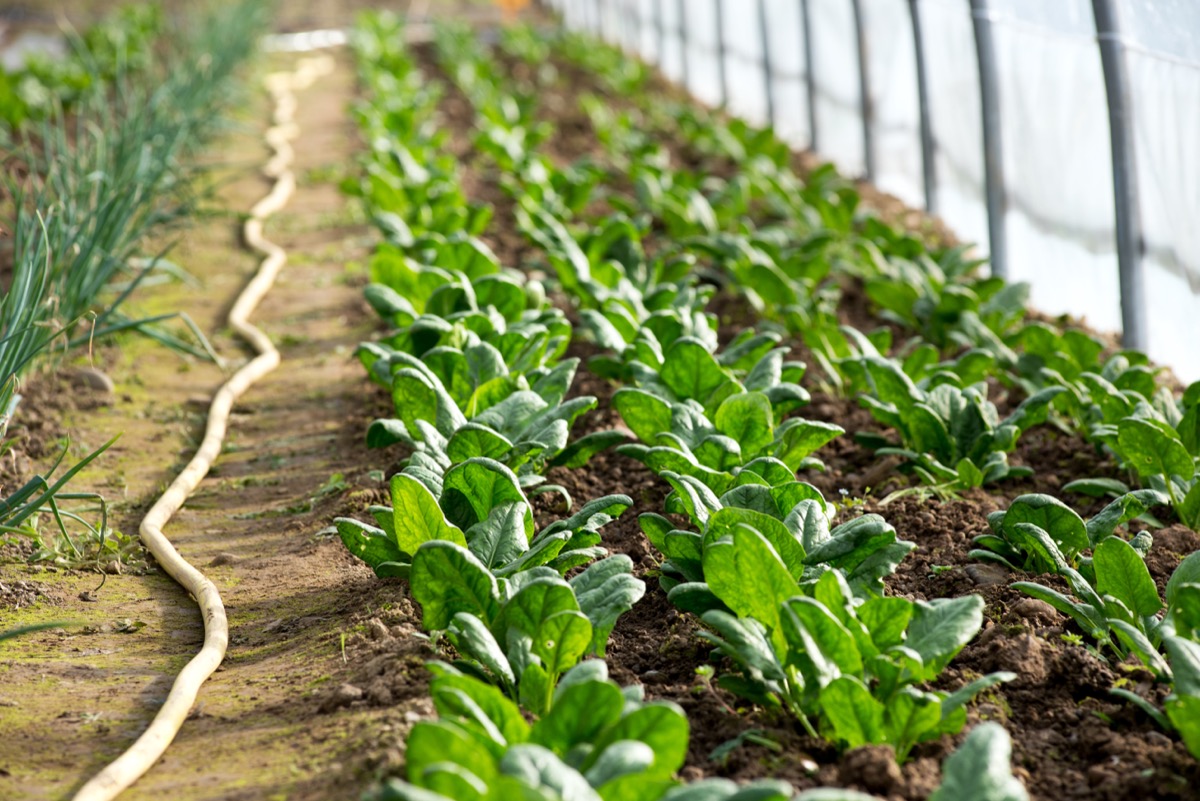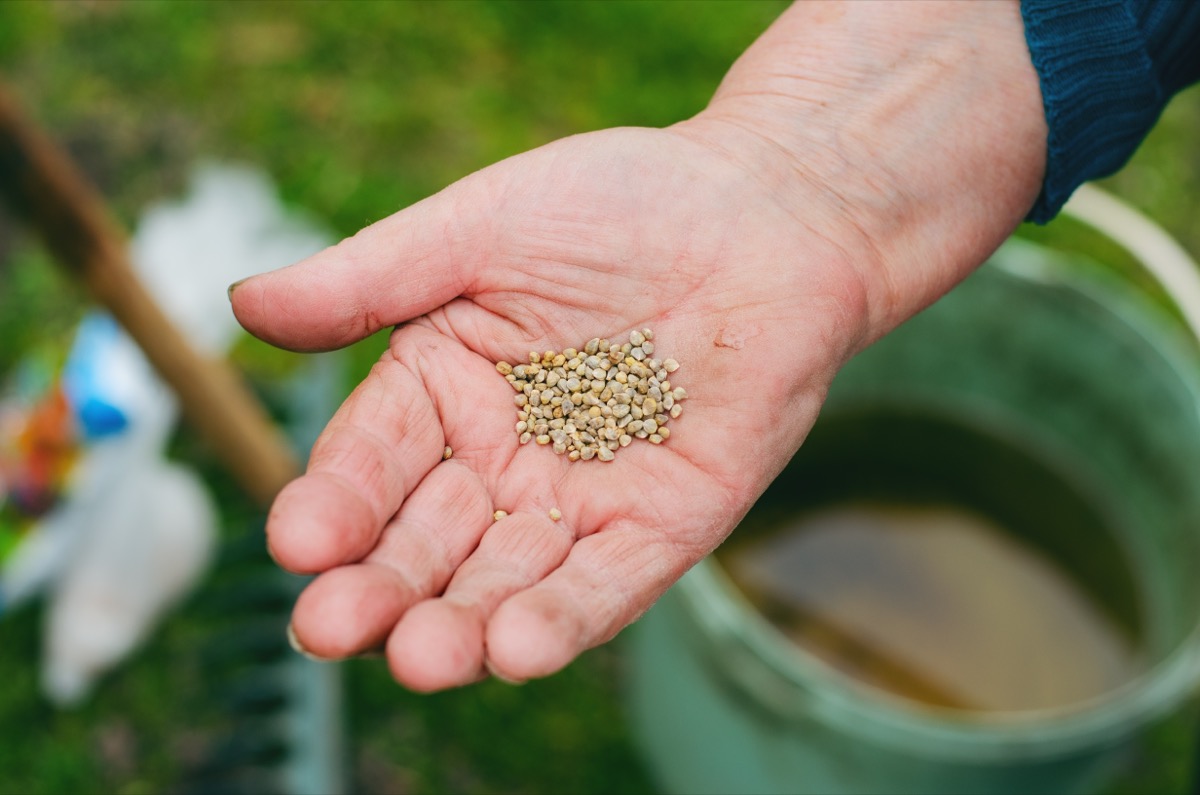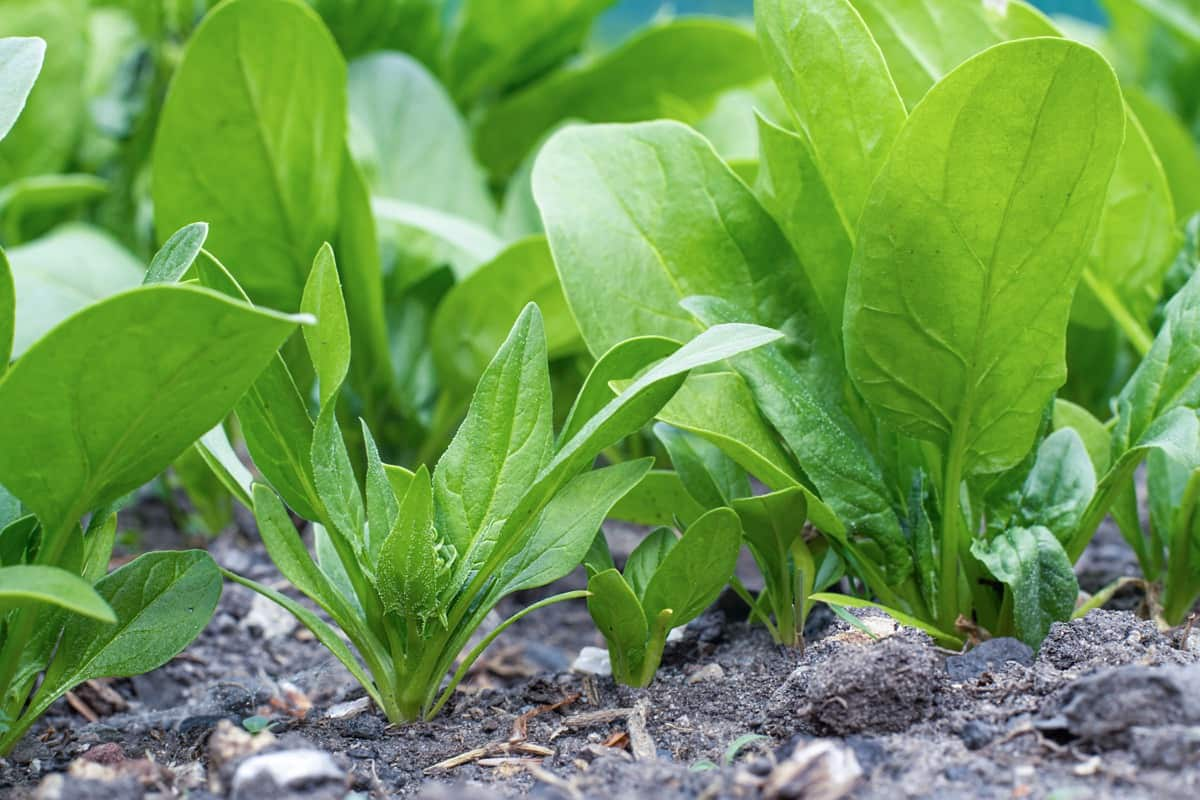Spinach is traditionally grown in greenhouses. It belongs to the amaranth family and is an annual plant. There have been many gardeners growing them for centuries. From day one, prepare them for success. Many cuts can be made, giving a steady income in the off-season. In a greenhouse, spinach can be grown in a pot or other container. This way, you can harvest as many tasty leaves as you want before some other four-legged creature eats them all.

How to Grow Spinach in Greenhouse
Soil Requirements for Growing Spinach in Greenhouse
A well-draining soil is essential for spinach plants since they won’t tolerate much standing water. Furthermore, they prefer slightly alkaline soil, in the range of 7.0 or slightly higher. When growing spinach in pots, it is especially important to meet these conditions. The soil where you will be planting your spinach should be worked with compost and a slow-release, high-nitrogen fertilizer a few days or a week before planting. It will help your plants start well and keep the soil moist. You should prepare spinach in advance rather than risk weak plants when growing spinach.
Sunlight and Temperature Requirements for Growing Spinach in Greenhouse
Spinach grows best in full sun to partial shade. Spinach can be grown in shadier conditions, but it needs at least six hours of full sun daily to thrive. Spinach should also be grown between 15 and 18°C. Even though some spinach varieties are surprisingly cold-hardy and can withstand temperatures as low as freezing, their leaf production greatly slows down as the temperature drops.
Likewise, spinach should not be grown in overly warm weather; partial shade is required. This signals to your spinach that it’s time to produce seeds and prepare to die of heat exhaustion. In a short period, they can bolt, causing bittered leaves and a failure of the plant. A shade cloth can sometimes reduce the ambient temperature around spinach plants during the day’s heat, but it won’t last long.
How to Grow Spinach in Greenhouse
Growing Spinach in Raised Beds
Raised beds could be the solution to your greenhouse having poor soil or the wrong soil type for crops to grow successfully – since spinach prefers neutral to alkaline soil. Raised beds provide good drainage and are also easy to maintain as a low-maintenance garden border. Before planting spinach seeds, fill them with rich, organic soil using 2-4 inches of compost.
Each row should be about 14 inches apart, and the seeds should be sown in a shallow drill about 1 inch deep. Thinning seedlings to about 3 inches apart should be done when they are large enough to handle. Ensure that the plants are regularly watered and fertilized.
How to Grow Spinach in Pots
- If you are growing spinach in pots, choose a pot or trough that is wide and deep enough to space the spinach plants out evenly.
- Make sure your potting mix is rich in organic matter.
- For spinach to grow well in pots, well-draining soil is essential.
- Seeds should be sown 1/2 inch deep in containers.
- Depending on the variety and growing conditions, seedlings should germinate in five to 14 days.
- For larger spinach leaves, space plants three inches apart – or slightly further if you want to harvest larger leaves.
- Place the pot in a sunny location when growing spinach in the fall.
- For spring and summer growth of spinach, keep the containers in a semi-shade.
- Spinach plants should not sit in wet soil – keep the soil moist but not wet, so make sure the pots drain well.
- Make sure the soil is fertilized regularly.
In case you missed it: How to Start a Spice Processing Business in India: A Profitable Agri-Food Business Idea

Watering Requirements to Grow Spinach in Greenhouse
When growing spinach, you need consistent soil moisture. The roots of most plants are thick and thin, with one deep taproot and many thinner ones. The taproot searches deep in the soil for water, but the rest of the roots also require moisture.
It’s ideal for spinach to receive about one inch of water per week, but slightly warmer weather may require 1.5 inches. It is better to provide regular, shallow waterings that moisten the soil than water heavily. It is best to water these plants slowly with drip irrigation or with soaker hoses.
Fertilizing Requirements to Grow Spinach in Greenhouse
Watch for at least four leaves after you’ve planted and sprouted seeds. Add an extra dose of a high-nitrogen water-soluble plant food around the base of your spinach plant once it has four young leaves. A side-dressing of slow-release granular fertilizer is recommended when you grow spinach instead of liquid fertilizers.
Keep the granules away from the roots and ensure they do not touch the plant. As a result of the higher nitrogen content in these fertilizers, scorching can occur. These fertilizers should be worked into the soil and thoroughly watered in a few inches away from the plant.
Pests in Spinach Grown in Greenhouse
- Spinach is highly susceptible to leaf miner attacks. With your finger, apply them to the underside of the leaf, or spray them with garlic soap.
- Blue mold, downy mildew, and mosaic virus are equally destructive. Blue mold or downy mildew can be further managed by removing infected leaves. Check the leaf for yellow bits at the tip and grayish-blue mold on the underside, or apply a prescribed fungicide.
- Spinach is a favorite food of aphids. The most effective way to knock them down is to splash them with high-pressure water or to use an organic spray.
- Spinach is a favorite food of caterpillars, too. Use an organic worm spray to catch them without endangering pets, people, or helpful insects
Harvesting Spinach
Spinach is ready to harvest between 40 and 45 days after it is planted. Spinach leaves can be harvested by plucking them from the plant. When you develop full spinach leaves, harvest them from the stalk, wash them, and tie them into attractive bunches. Create tasty salad mixes with your spinach and lettuce by presenting them in tote bags.
When the leaves are harvested early in the morning, they are at their tastiest due to the cold moisture of the night. You can pick bigger leaves by pinching or cutting the stalks near the bottom and letting the shorter inner leaves grow. When flowers spring, stalks cut the entire plant off at an inch over the base, then uproot and compost the bulbs. Harvesting too late or expecting bigger leaves will result in bitterness soon after maturation.
In case you missed it: How to Grow Greenhouse Tomatoes: A Step-By-Step Guide for Seed to Harvest

Conclusion
Cool-weather crops, such as spinach, are a great choice. It is simple and easy to grow spinach plants, and you can enjoy spinach leaves within six to eight weeks of planting them. Spinach crops produce huge yields of nutritious, delicious dark green leaves that are popular in salads and most recipes. You could enjoy nutritious green leaves year-round if you plan carefully and plant different types successively.
- Feed Your Flock for Less: Top 10 Tips to Save on Chicken Feed
- Ultimate Guide to Ossabaw Island Hog: Breeding, Raising, Diet, and Care
- Hatching Answers: The Top 10 Reasons Your Chickens Aren’t Laying Eggs
- Eggs and Economics: Breaking Down the Cost of Raising Backyard Chickens
- Defend Your Greens: Proven Methods to Keep Iguanas Out of Your Garden
- Ultimate Guide to Cinnamon Queen Chicken: A Comprehensive Guide for Beginners
- Ultimate Guide to California Tan Chicken: Breeding, Raising, Diet, Egg-Production and Care
- Ultimate Guide to Marsh Daisy Chicken: Breeding, Raising, Diet, and Care
- 10 Types of Chicken Farming Businesses You Can Start for Profits